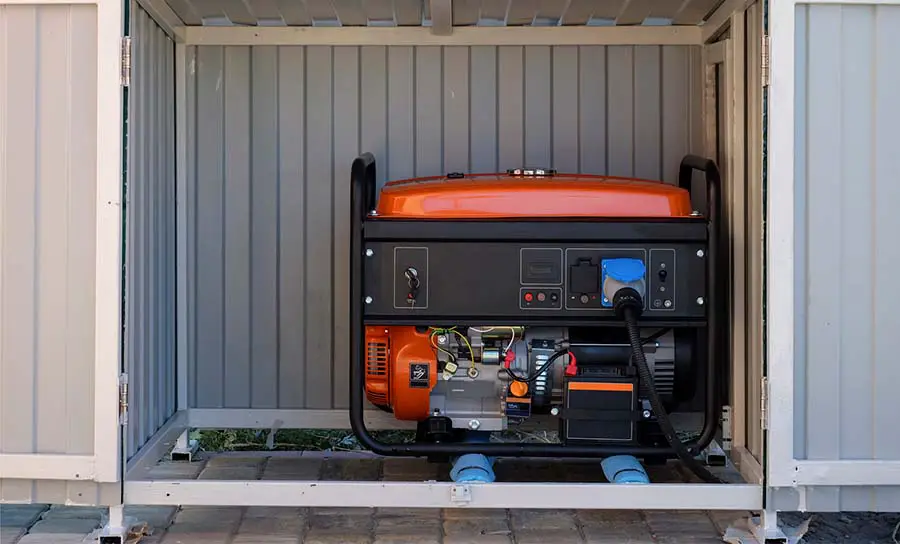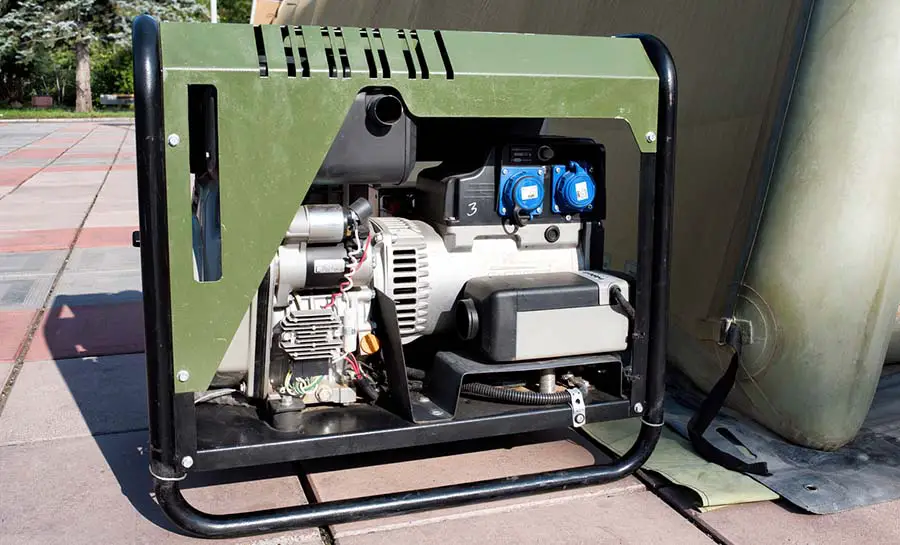
As humans, we want electricity and cannot live without it, and because of power outages, most people who can afford it have resorted to buying generators. Some people are so addicted to having electricity that they even have their generators on during very stormy weather, but the question is whether or not it is safe to do so? And if so, where would you put your generator during a storm?
It’s best to cover your generator during a storm or bring it into an enclosed, dry space until it stops raining. Running a generator in an enclosed space is a serious health and fire risk, so turn your generator off during a storm or use a specialized generator cover that allows adequate airflow.
There are many rules for storing your generator when it is raining and when it is not raining. You cannot nearly place your generator wherever you deem convenient. You must ensure it is at the right place and is receiving the proper protection – you can even build a protective cover for your generator if you want to!
We discuss and explore all of these options and more below.
Where To Place a Generator During a Storm
There are some general safety tips for where you should place your generator regardless of the weather. From these general safety tips, we can derive where our generators must be when it is raining.
There are two discussions applicable to this scenario: where to put our generators if we want them running while it’s raining, and where to put our generators if they are not operating while it’s raining.
Where To Put a Generator That Is Turned Off While It Is Raining
The rules for where to store a generator while it is raining are the same rules that apply when storing your generator when it is not raining. Whether it’s raining or not, it is best to keep your generator in:
- A shed either specifically made for generators or not
- A tent made for generators
- A cover made for generators
Some specific examples of covers that are made specifically for generators to survive in almost any weather conditions while stored outside are:
- The Microfab Portable Generator Enclosure (you can use this one while your generator is running)
- The Suncast Horizontal Storage Shed
- The Rubbermaid Horizontal Storage Shed
It is essential to keep your generator’s cover clear from debris, dirt, and moisture. That is precisely what these covers do.
Where To Put a Generator That Is Turned On While It Is Raining
It is crucial that you cover it when your generator is on while it is raining, so it does not get wet. You must ensure that your generator is sheltered correctly, but even then, it is not recommended to have your generator running while it is raining.
Here are some places where you can store a running generator while it’s raining:
- In a GenTent Safety Canopy. This tent canopy will protect and waterproof your generator in all the necessary areas. The great thing about this generator tent is that it is very user-friendly and can be transported with your generator. This tent’s ventilation is also perfect, which means that your generator will not overheat while it’s running.
- Steel enclosures. These products are a bit more difficult to install and might require a professional to do so, in addition to being a bit more expensive. It might also be necessary that a pad of cement must be laid for the enclosure to be installed upon. Thus, this product is fine for when you’re at home, but not ideal if you want to move it around.
Building Your Own Enclosure To Protect Your Generator During a Storm
If you are a DIY person, you can also build your own enclosure to protect your generator. If you want it running while it’s raining, there are important things to bear in mind:
- There cannot be a single sensitive area or outlet of the generator exposed to moisture. It is necessary and important that these areas are protected from any moisture.
- You must make sure that ventilation is properly accounted for in your custom-made enclosure; otherwise, overheating will be an issue for your generator.
- Ensure that your custom-made enclosure can protect your generators against the elements – waterproof where necessary, make sure you use materials that are sturdy in the face of strong winds, etc.
- If you want to, make your generator portable.
In order to build your own generator enclosure, you will need many items such as aluminum sheets, louvered vents, screws, a jigsaw, plywood, railing bars, etc. These are the steps for designing your enclosure once you have all the necessary materials:
- Sketch the design of your generator. This will determine the dimensions and shape of the structure. This will aid you in determining which materials you will require and if you have, perhaps, forgotten about some materials. Make sure you design your enclosure to protect the generator from the rain whilst allowing for ventilation.
- Cut a top panel out of the plywood for your enclosure using a saw. This means all dimensions will align with the top panel.
- Now you need to measure and chop off the right-sized bars. Use one-inch screws and attach the bars to the top panel.
- You can now start with the front panel, i.e., the panel at the air intake. Once you have measured the front panel, you can measure what sizes the side panels must be, and you can use the plywood to cut out these three panels.
- Take your louvered vents and mark them on your side panels and cut out those shapes using your jigsaw. Fix these louvered vents to the side panels with ½ inch screws.
- Cut the back panel out of the plywood and ensure it gives the back of the generator enough space such that the exhaust is not obstructed.
- You can now screw the aluminum sheet to the back panel, with the idea that it can function as a roof over the generator.
Safety Tips for Using a Generator During the Stormy Seasons

Before using a generator, there are some general safety tips you should be aware of and consider when using this type of equipment. These are tips that pertain to general generator usage, including where to run them, whether there is a storm or not.
- Never have a running generator indoors or in enclosed spaces. Many injuries and/or deaths result from CO poisoning because the users of these generators had their generators running indoors or in enclosed spaces. Unfortunately, this also includes your garage or any other space that can accumulate a deadly amount of carbon monoxide.
- Do not have the generator placed within 20 feet of your house. Make sure your generator is outside of this 20 feet radius, in addition to having the exhaust pointing away from the windows and doors of your house.
- Make sure to not run a generator in the rain. Make sure that when there is rain that your generator is shielded against it but still has enough ventilation. This point will be expanded on later.
- Always turn your generator off before you refuel it. It must be given a chance to cool off because if any fuel drops on warm parts of the generator, it can ignite.
- If possible, always have extra gasoline stocked. However, do not stock your gasoline inside your house or anywhere near sources of heat or fire.
- Read the instruction manual for your generator. A lot of it is minute things that you wont need to know, but there are usually some helpful neggets of information in there and you need to know if you must earth your generator or not.
- Use the appropriet extension cords for the job. Try to only connect your appliances to the generator with heavy-duty extension cords that are meant for outdoor usage.
Conclusion
So now we know it is possible to have your generator running during a storm so that you won’t miss out on your favorite series you were planning to watch! As long as you ensure that your generator is concealed and protected against all the elements, you should be able to have it running.
You can even build a custom-made protective shelter for your generator unit if you are so inclined!
